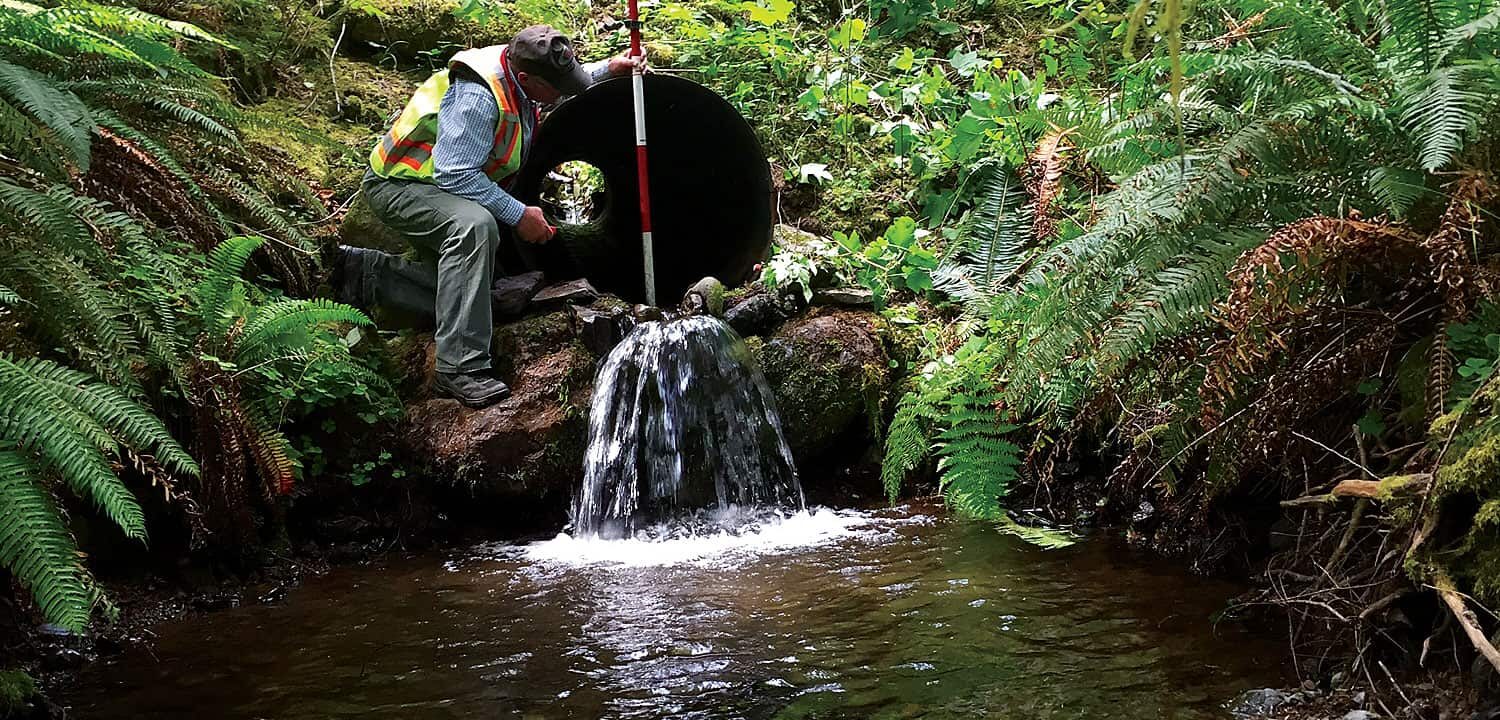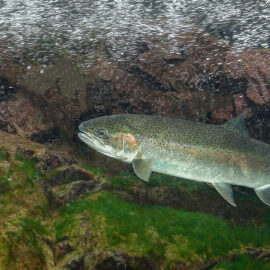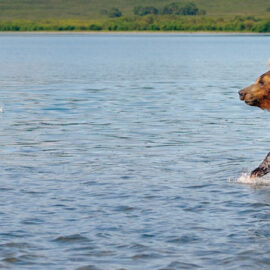On the Washington Coast, we set out to remove fish barriers in salmon strongholds.
Wild Salmon Center has launched a Connect to Cold Water campaign to reconnect 150 miles of streams along the Washington Coast, to help wild steelhead and coho salmon access cold-water rearing habitat. As a part of this effort, we worked this summer with local, federal, and conservation partners on the coast to do ground surveys of county-owned fish passage barriers, so that we can begin engineering solutions to remove these barriers for salmon and steelhead.
About 16% of all fish passage barriers in the Hoh, Quillayute and Clearwater Rivers are county-owned. Last month, our team began in earnest with our Washington Coast contract engineer Eric Carlson joined by Trout Unlimited’s Luke Kelly, University of Washington scientist Rich Osborne, state biologist Cade Roller, and several state technicians in inventorying blocked Clallam County streams. This work will expand into Jefferson County and the Hoh and Clearwater Rivers over the next 18 months as we simultaneously rank and design shovel-ready projects.
In the photo above, you can see one culvert perched too high above a Sol Duc tributary for juveniles to reach. In coastal streams, we are focused on vulnerable juvenile coho and steelhead, whose limited access to calmer, cold water rearing areas hurts overall populations on the coast.
These cold water reaches – often blocked by ‘mini-dams’ in the form of culverts and failing roads – are key for helping juveniles ride out increasingly hot summers and flood-prone winters. WSC has been working with the University of Washington since 2012 to identify the highest value stream reaches for salmon along the coast, using our recognized mapping prioritization tool.
To fast track projects, we are dedicating private and foundation funds to get projects shovel-ready, in order to leverage public infrastructure dollars. Our goal is to design up to 50 shovel-ready projects over the next two years. These projects will be more competitive for state and federal funding and kick straight into the construction phase as they are funded.
The Harder Foundation and several private donors have supported us in the survey and design phase. Because of their support, we were able make progress with our field work this summer.
However, many salmon restoration projects and jobs on the Washington Coast and elsewhere around the state are in limbo, as the Washington Legislature still has not approved a capital works budget. The budget is held up as the Legislature works to resolve a stalemate over residential water rights, which the Washington Supreme Court has suspended in some rural areas.
Along with coastal partners, WSC is pushing for a resolution of this complicated issue, as both rural landowners and so much of the business of the state depends on the resolution.
With projects at the ready, we will be able to quickly move forward as the water rights issue is resolved.




